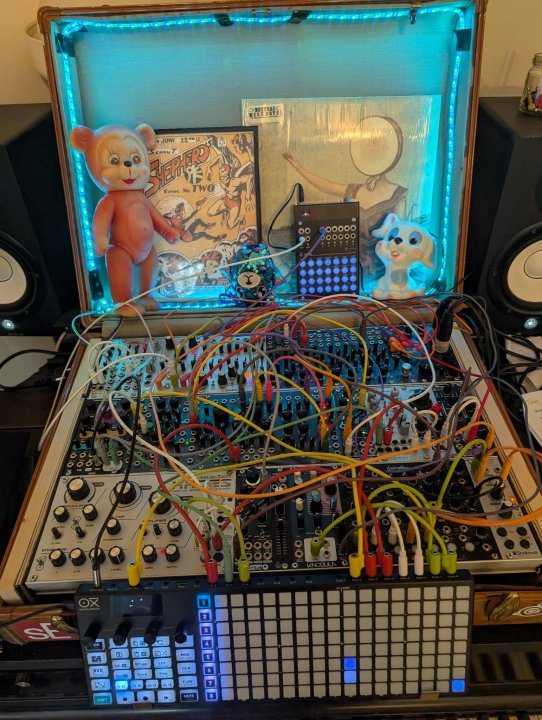Alright. My initial rack broke (the board fried ... NiftyCase in case you're curious) so I just "had" to get a new rack. So I doubled my HP. The 84 HP on the bottom are, at time of writing, modules I don't have (yet). I really want the Collide 4 so the rest should center around that. I do have other racks (and a KSP, etc) so racks aren't in isolation here but...I do feel a rack should be a musical instrument by itself.
What do you think about my proposed bottom row? The top row I already have.
- The QPAS is more HP thank I'd like...but I'm pretty sure its the filter I want
- I found it hard to add enough clock + rhythm to the rack. I'm basically using CLK and the 4ms RCD. Not great, but HP is in demand! I thought about getting Euclidean circles, but its too big and I still need a clock :( If I could just free up 2 more HP... https://busycircuits.com/pages/alm034
- Never enough LFOs! I do have the Vampire LFO and thought expert sleepers Otterley and Stages/Steps could be as best as I can do for the space I have
- And I need a drum. Crater was the one I wanted the last time I filled up a rack.




